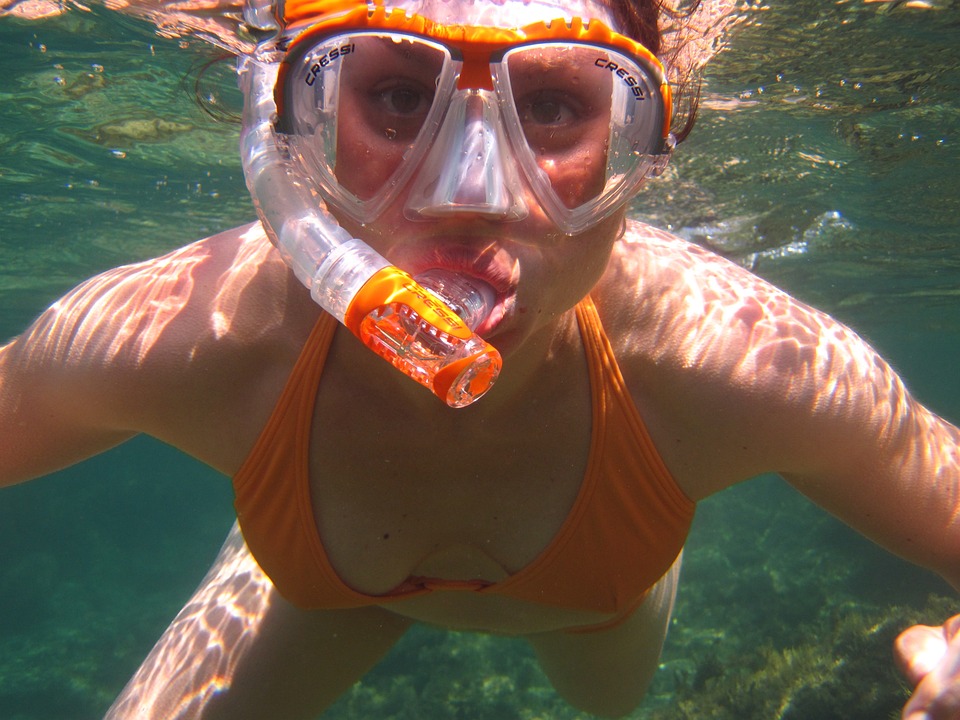Bikini Line Blackheads: Causes, Prevention, and Treatment
Bikini line blackheads are a common skin problem that many women face. These blackheads occur due to the accumulation of oil, dead skin cells, and bacteria in the hair follicles. They can be unsightly and embarrassing, especially during the summer months when we wear shorts and swimsuits. In this article, we will discuss the causes, prevention, and treatment of bikini line blackheads.
Causes of Bikini Line Blackheads
There are several factors that contribute to the formation of blackheads on the bikini line. One of the main causes is the accumulation of oil and dead skin cells in the hair follicles. When these substances build up, they clog the pores and create a favorable environment for bacteria to grow. As a result, blackheads form on the skin.
Another cause of bikini line blackheads is friction. When we wear tight clothing, such as underwear or swimsuits, the friction between the fabric and the skin can lead to irritation and inflammation. This can cause the formation of blackheads and other types of acne.
Hormonal changes can also contribute to the formation of blackheads on the bikini line. During puberty and menstrual cycles, the body produces more androgen hormones, which can increase the production of oil in the skin. This excess oil can clog the pores and lead to the formation of blackheads.
Prevention of Bikini Line Blackheads
Preventing bikini line blackheads is essential to maintain healthy and clear skin. Here are some tips to prevent the formation of blackheads on the bikini line:
1. Exfoliate regularly: Regular exfoliation helps remove dead skin cells and unclog the pores. Use a gentle exfoliating scrub once or twice a week to keep the skin clean and smooth.
2. Wear loose-fitting clothing: Avoid wearing tight clothing that can cause friction and irritation on the skin. Opt for loose-fitting underwear and swimsuits that allow the skin to breathe.
3. Use non-comedogenic products: Choose skincare and makeup products that are labeled as non-comedogenic, which means they don’t clog the pores. This will help prevent the formation of blackheads on the bikini line.
4. Practice good hygiene: Keep the bikini area clean and dry to prevent the accumulation of bacteria and oil. Use a gentle cleanser and pat the skin dry with a clean towel.
5. Avoid picking at blackheads: Picking at blackheads can cause scarring and further inflammation. Instead, use a blackhead extractor tool or visit a dermatologist for professional extraction.
Treatment of Bikini Line Blackheads
If you already have blackheads on the bikini line, there are several treatment options available. Here are some of the most effective treatments for bikini line blackheads:
1. Topical treatments: Over-the-counter topical treatments containing salicylic acid or benzoyl peroxide can help unclog the pores and reduce inflammation. Apply these treatments directly to the affected area.
2. Professional extraction: A dermatologist can perform professional extraction using a blackhead extractor tool. This is a safe and effective way to remove blackheads without causing scarring or further inflammation.
3. Chemical peels: Chemical peels containing glycolic acid or salicylic acid can help remove dead skin cells and unclog the pores. This treatment is best done by a dermatologist.
4. Laser therapy: Laser therapy can help reduce the appearance of blackheads by targeting the bacteria that cause them. This treatment is also best done by a dermatologist.
5. Microdermabrasion: Microdermabrasion is a non-invasive treatment that uses a special tool to exfoliate the skin and unclog the pores. This treatment is best done by a dermatologist or esthetician.
Conclusion
Bikini line blackheads are a common skin problem that can be prevented and treated with the right approach. By following the tips and treatments outlined in this article, you can keep your skin clear and healthy. Remember to practice good hygiene, wear loose-fitting clothing, and use non-comedogenic products to prevent the formation of blackheads on the bikini line. And if you already have blackheads, seek professional treatment to avoid scarring and further inflammation. With the right care, you can enjoy smooth and clear skin all year round.
Commonly Asked Questions Concerning Bikini Line Blackheads
What are Bikini Line Blackheads?
Bikini Line Blackheads are small black or yellow dots that appear around the bikini area. These blackheads can appear on the skin due to excessive oil production from the sebaceous glands, clogged hair follicles or dirt accumulation.
The 3 most important information about Bikini Line Blackheads are:
1. Blackheads are a type of acne that can appear on any part of the body, including the bikini area.
2. Hormonal changes, sweating, and friction can contribute to the development of blackheads around the bikini line.
3. Proper hygiene, exfoliation, and the use of skin care products can help prevent and treat bikini line blackheads.
What Causes Bikini Line Blackheads?
Bikini Line Blackheads can be caused by a variety of factors. Hormonal changes, sweating, and friction can all contribute to the development of blackheads in this area.
The 3 most important information about the causes of Bikini Line Blackheads are:
1. Hormonal changes can increase oil production in the skin, leading to the development of blackheads.
2. Sweat and friction from clothing can also contribute to the accumulation of dirt and oil in the pores, leading to blackheads.
3. Tight clothing and poor hygiene can also contribute to the development of blackheads in the bikini area.
How to Prevent Bikini Line Blackheads?
Preventing Bikini Line Blackheads requires proper hygiene, exfoliation, and the use of skin care products.
The 3 most important information about preventing Bikini Line Blackheads are:
1. Proper hygiene involves showering daily and gently cleansing the bikini area with a mild cleanser.
2. Exfoliating the skin around the bikini area can help remove dead skin cells and prevent the buildup of dirt and oil in the pores.
3. Using skin care products that contain salicylic acid or benzoyl peroxide can help prevent the development of blackheads in the bikini area.
How to Treat Bikini Line Blackheads?
Treating Bikini Line Blackheads involves using topical treatments and making lifestyle changes.
The 3 most important information about treating Bikini Line Blackheads are:
1. Topical treatments such as retinoids and topical antibiotics can help reduce the appearance of blackheads in the bikini area.
2. Making lifestyle changes such as wearing loose clothing and avoiding tight undergarments can help prevent the development of blackheads.
3. In severe cases, a dermatologist may recommend professional treatments such as chemical peels or extractions to remove stubborn blackheads.
Are Bikini Line Blackheads Harmful?
Bikini Line Blackheads are not harmful, but they can be a cosmetic concern for some individuals.
The 3 most important information about the harm of Bikini Line Blackheads are:
1. Blackheads are a type of acne that are not harmful but can be a cosmetic concern for some individuals.
2. In rare cases, blackheads can become infected and lead to more serious skin conditions such as cellulitis or folliculitis.
3. If you are concerned about the appearance of blackheads in the bikini area, it is important to speak with a dermatologist for proper diagnosis and treatment.
Introduction
Bikini line blackheads are a common problem that many people experience, particularly women. Despite their prevalence, there are several misconceptions about this condition that can lead to ineffective treatment or unnecessary worry. In this article, we will explore some of the most common misconceptions about bikini line blackheads and provide accurate information to help you better understand and manage this condition.
Misconception 1: Bikini line blackheads only affect people who don’t practice good hygiene
One of the most common misconceptions about bikini line blackheads is that they only occur in people who don’t practice good hygiene. While it’s true that poor hygiene can contribute to the development of blackheads, this is not the only factor at play. Blackheads can also be caused by hormonal changes, excess oil production, and genetic factors. Furthermore, even people who practice good hygiene can still develop blackheads, particularly in areas where the skin is naturally more oily, such as the T-zone and the bikini line.
Misconception 2: Squeezing blackheads is the best way to get rid of them
Another common misconception about bikini line blackheads is that squeezing them is the best way to get rid of them. While it’s true that squeezing can sometimes remove the blackhead, it can also lead to scarring, infection, and further breakouts. Additionally, squeezing can push the blackhead deeper into the skin, making it harder to remove and potentially causing more damage. Instead of squeezing, it’s recommended to use gentle exfoliants and blackhead removal products, or to seek professional treatment from a dermatologist.
Misconception 3: All blackheads are the same
Many people believe that all blackheads are the same, but this is not the case. There are actually two types of blackheads: open comedones and closed comedones. Open comedones are the most common type of blackhead and are characterized by a black or dark brown spot on the surface of the skin. Closed comedones, on the other hand, are white or flesh-colored bumps that are located beneath the surface of the skin. Closed comedones can be more difficult to treat than open comedones, and may require professional treatment to remove.
Misconception 4: Blackheads only occur on the face
Another common misconception about blackheads is that they only occur on the face. While the face is the most common location for blackheads, they can also occur on other parts of the body, including the chest, back, and bikini line. In fact, the bikini line is one of the most common areas for blackheads to develop, particularly in women. This is because the skin in this area is often subject to friction and sweat, which can contribute to the development of blackheads.
Misconception 5: Blackheads are a sign of poor health
Finally, many people believe that blackheads are a sign of poor health or hygiene. While it’s true that blackheads can be unsightly and uncomfortable, they are not necessarily an indication of poor health or hygiene. As mentioned earlier, blackheads can be caused by a variety of factors, including hormonal changes, excess oil production, and genetic factors. Additionally, even people who practice good hygiene can still develop blackheads. If you’re concerned about your blackheads, it’s important to speak with a dermatologist who can help you determine the underlying cause and develop an effective treatment plan.
Bikini Line Blackheads
#Bikini #Line #Blackheads


